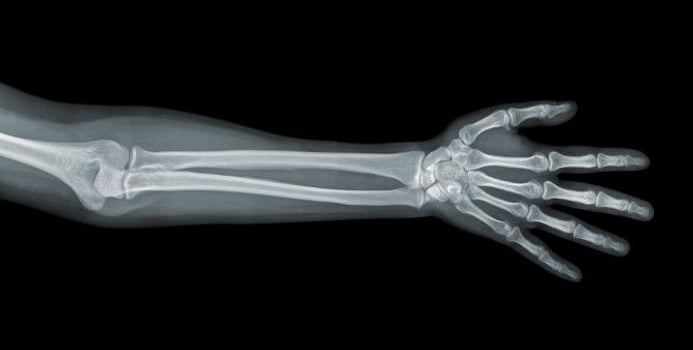Bone calcium deposits occur when your body doesn't get enough calcium from your diet and begins to take calcium from your bones to make up for the deficit. While 98% of the calcium in your body is found in your bones and teeth, the remaining 2% is absorbed into the blood and pumped around the body, where it helps with digestion, cell division and circulation.
If you don't get enough dietary calcium or enough exercise, bone calcium deposits can form in your tissues and organs; over time, bone calcium deposits can contribute to osteporosis, cancer, heart disease and other degenerative diseases.
Calcium Deposits: What They are and How They're Caused
Calcium deposits can form when a bone is damaged or placed under stress. The body sends extra calcium minerals to the damaged area to help repair it. These minerals travel to the stressed or damaged bone through your blood stream. If your body's signals aren't functioning correctly due to a calcium deficiency, then extra calcium may build up around the damaged area.
Over time, this extra layer of calcium hardens into a deposit. The deposit may pinch tendons and nerves, causing pain.
Risk Factors for Calicum Deposits
Bone calcium deposits are most common in women above 40 years of age, the same group at the highest risk for osteoporosis. Calcium deposits can occur when your body doesn't receive enough dietary calcium. A calcium deficiency can cause your body to remove calcium from the bones and send it other areas of the body, where it's needed to help with digestion, regulating cell division and maintaining adequate blood circulation.
A sedentary lifestyle is another risk factor for bone calcium deposits. Regular exercise helps keep your bones strong and helps your circulation, so that calcium minerals go to the places where they're needed, rather than building up in organs and soft tissues.
Preventing Bone Calcium Deposits
The best way to prevent calcium deficiency is by getting enough calcium in your diet. Dairy products are a good source of calcium; doctors recommend that everyone consume at least three one-cup (8 oz) servings of dairy products each day.
If you wish to exclude dairy products from your diet, you can get dietary calcium from one of these other sources:
- Collard greens, which contain 266 mg of calcium per serving.
- Green peas, which contain 94 mg of calcium per 8 oz serving.
- Baked beans, which contain 154 mg of calcium per 8 oz serving.
You can also use a calcium supplement. Experts suggest 1,000 to 1,200 mg calcium per day, along with 800 IU of vitamin D to aid your body in calcium absorption.
Treating Calcium Bone Deposits
Once you've formed calcium bone deposits, your doctor may recommend that you restrict your calcium intake, on the theory that your body will reabsorb calcium deposits. However, this practice is controversial. Many doctors will suggest surgery, medication and physical therapy.
Calcium deposits often form in the shoulder, causing the joint to become stiff and frozen. Physical therapy can help patients retain movement, while anti-inflammatory drugs can lessen the pain. The application of moist heat can also help.
If surgery is called for, a doctor may inject Novocaine, saline and cortisone into the deposit. Arthroscopy may be used to remove the deposit.



